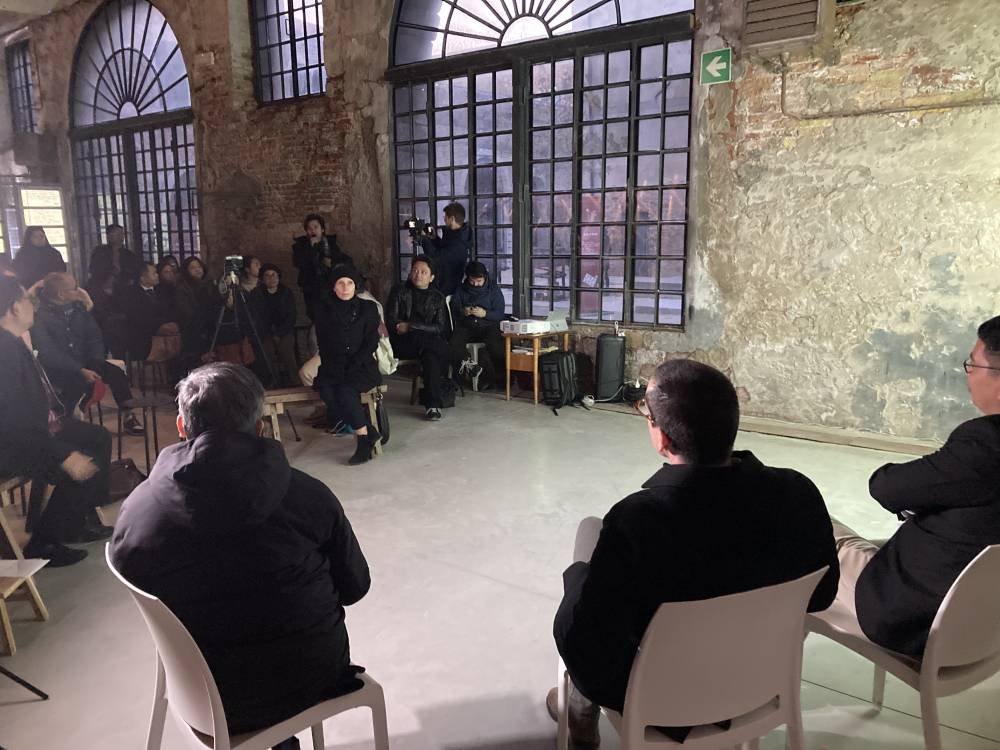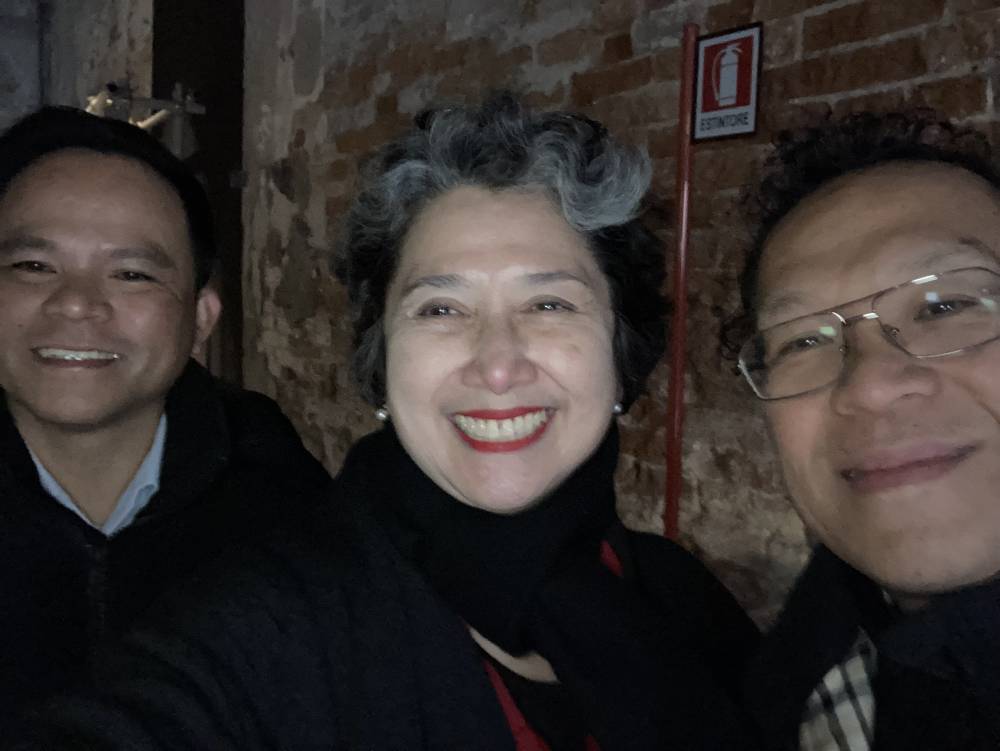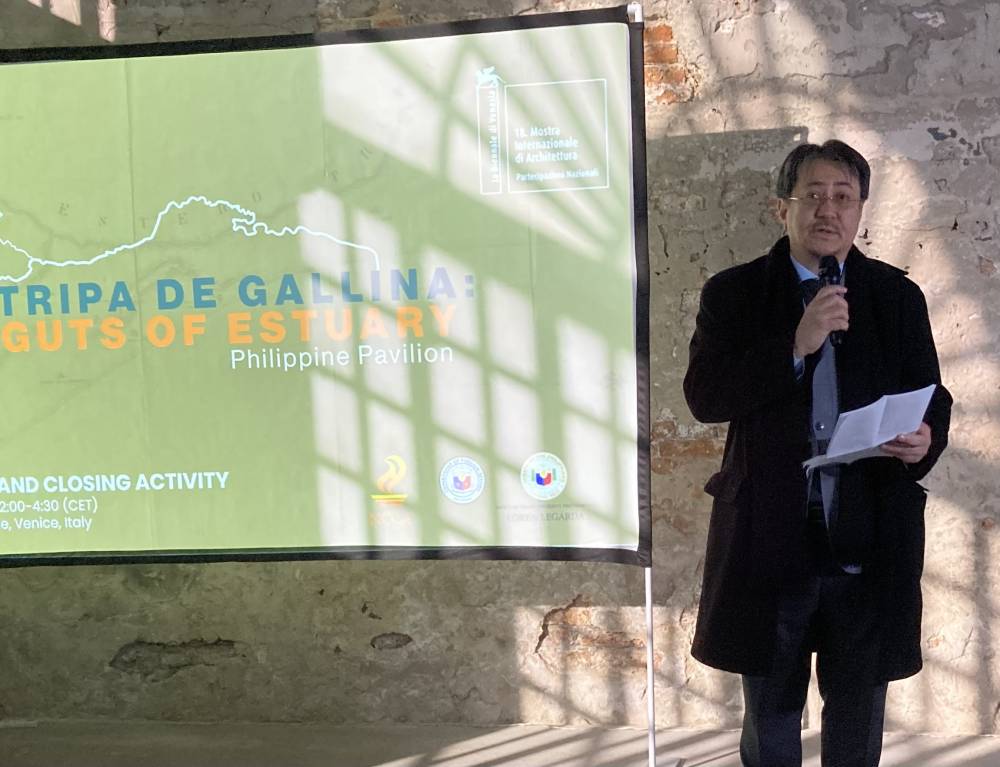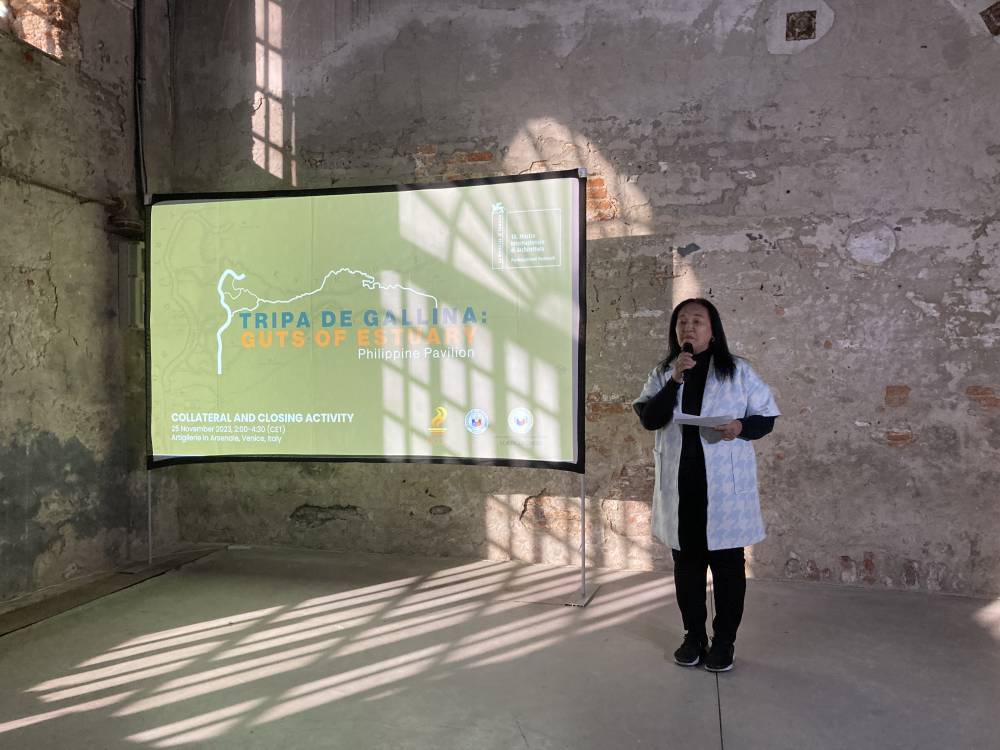
After the closing of the 18th International Architecture Exhibition of La Biennale di Venezia in Venice, Italy, last Nov. 26, where the Philippine Pavilion’s featured work, “Tripa de Gallina: Guts of Estuary,” stood for six months, social worker Arnold Rañada of The Architecture Collective (TAC) is looking forward to putting the installation in place in Barangay 739 in Malate, Manila, so it can start bringing people together.
“I see the elderly taking care of the plants and being in charge of sustaining the pavilion,” Rañada muses. TAC will work on the project for the next six months, but there’s also an exit plan: The community must eventually take charge, after the necessary training on such issues as waste management, carpentry and even financial literacy for women. “There will be a social contract and a handover: Here it is for you to use, please sign, it’s yours—and your responsibility.”
TAC head architect Lyle La Madrid confirms the “crash course on using the public space and taking care of it” that the residents are getting. “It’s a program rather than just a structure.”
He recalls how, during his last visit, somebody brought chairs to the estero bridge and started talking with friends; someone else came with a carton of goods to sell. “It’s a dynamic space, and we take inspiration from that dynamism and make architecture a translator.”
That’s why they can hope to see it in other barangays, he says. “We can replicate the process, not the design, material, shape or form. We communicate with the community, then translate that into something tangible.”
“Having lived near the Tripa, I can say that it is not an Instagrammable sight today,” noted Philippine Ambassador to Italy Nathaniel “Neal” Imperial in his speech at the closing event for the exhibit; he himself used to live in Malate. “And yet, a community lives and thrives along its banks, families whose lives and future can benefit immensely from the intervention of people with far-reaching ideas that offer the promise of hope.” He noted how the bamboo structure, both architectural design and installation art, “inspires communities along the estuary to be part of the effort to make their living spaces cleaner, safer and more livable.”

Fantastic idea
“I think it’s a fantastic idea that every time there’s a Biennale, the Filipino community in northern Italy is always involved, including the youth here, because they’re the ones who serve as tour guides for the exhibition for the whole six months,” adds Imperial during an interview. “They don’t only help to promote it, but it’s also educational, to reconnect with their Filipino roots.”
Such involvement was evident from the get-go, even before several Filipinos, representing associations from Venice to Treviso to Padova, gathered to listen to the closing roundtable discussion.
There’s Darwin Gutierrez, manager of the Palazzo Abadessa in Venice who has lived in the city for some 28 years. Gutierrez recounts how he used to run into the Philippine Arts in Venice Biennale Coordinating Committee (PAVB-CC) team before the first exhibit in 2015, said hello, and eventually became the de facto local coordinator. “Sabi nila, bakit hindi na ikaw ang humawak? (They said, why don’t you just handle it?) Eh di siempre, okay lang sa akin,” he says.

Then there’s Batangueño Nonon Malinay Jr., who first arrived in Venice in 1995 and now works in boat and ship maintenance. Malinay heads the Comunità Filippina di Venezia Mestre e Terraferma, a 3,000-strong Filipino association, succeeding Gutierrez as president. “Pambihirang pagkakataon (It’s a rare chance) at big honor sa aming makita ang actual artworks.” His kids have grown up here also; his now 24-year-old daughter served as an exhibition attendant last year, although she now has a full-time job. “Hinihikayat namin silang tumulong, para konektado pa rin sa Inang Bayan; maganda yung nakikita nila, natututo tungkol sa kasaysayan.” (We encourage them to help so they stay connected to the Motherland; they see good things, and they learn about history.)
“They’re the third generation, Italians na yan,” notes PAVB-CC consultant Patrick Flores. “They will become decision makers in their adopted countries. In the formation of the contemporary Filipino, the Biennale is important. They can be rooted in the Motherland without negating where they are now. You don’t have to negate the local and glorify the global, or the other way around. There’s an interplay, back and forth.”

Heartwarming
A whole bunch of Filipinos in Italy showed up for the dinner hosted by the NCCA after the closing event, including 37-year-old Nadine Vanmierlo, whose mother leads a Filipino women’s association in Padova, 30 minutes from Venice by train and water taxi. Talk about back and forth: Vanmierlo was born in Manila, moved to Italy when she was 4, then went back to study at De La Salle–College of Saint Benilde. She now works as marketing director for a Padova food company, but is also a painter and illustrator who has exhibited her works in Manila in “Eterea Bellezza,” a show curated by journalist and host Daphne Oseña-Paez, in November 2021. She’s married to an Italian and now has two children, but is completely in touch with her roots. “My mom is very fond of Filipino culture, pinalaki niya ako (she raised me) to speak Tagalog—and I speak it very well!”
La Madrid notes how the Filipinos in Venice were actually asking for the structure, so they could have something Filipino to put up somewhere. “It was very heartwarming,” he says with a laugh.

For PAVB-CC head Riya Lopez, the success of the Philippine participation in the Biennale goes beyond “opening doors for succession, or providing an opportunity to engage more with the community along waterways.” What’s paramount to Lopez is to engage the Filipino community, “even just in the opening and closing events. They volunteer, which is a big deal, because even if they should be working, they set aside time. Little by little, there’s the opportunity to educate, to learn and feel more about being Filipino. Para kang nagtatanim (It’s like you’re planting something), so nothing is wasted.”
Then, of course, there’s the ultimately intangible but huge matter of national pride. “It’s hard to gauge, but you can feel it,” Lopez enthuses. “There’s nothing wrong with being known for our service, for working in hotels and as caregivers. But now, we also have a padiglione (pavilion), a source of pride, and that’s hard to quantify with money. There is pride, and there is hope.”













































